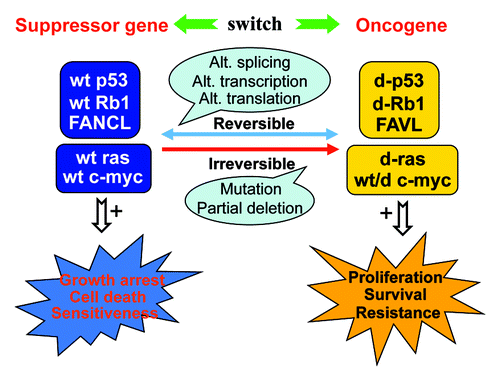Figures & data
Figure 1. The wild-type (wt) of tumor suppressor genes exemplified by p53, Rb1 and FANCL can be switched to a different (d) form with oncogenic features, whereas the wt of canonical oncogenes, exemplified by k-ras and c-myc, are versatile or can be switched to a form with suppressive traits. The switch may occur via reversible mechanisms such as alternative (Alt.) transcription, splicing or translation, or via irreversible mechanisms such as mutation or partial deletion. Tumor-suppressive functions are typically manifested as enhanced (+) growth arrest, cell death or sensitivity to cancer treatments, whereas oncogenic traits include increased (+) proliferation, survival or resistance to therapies.
